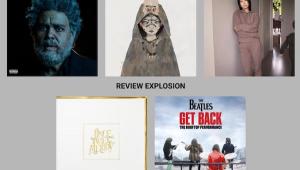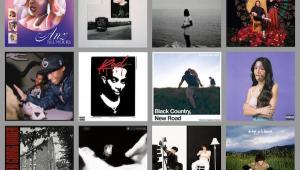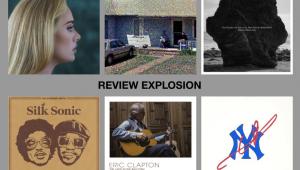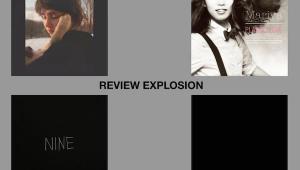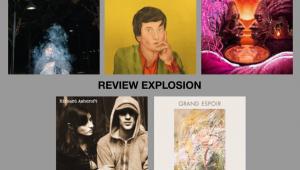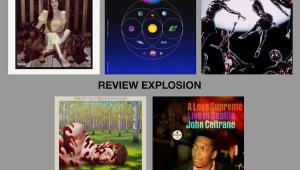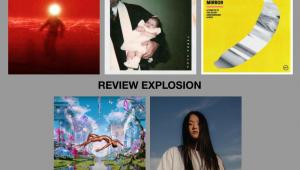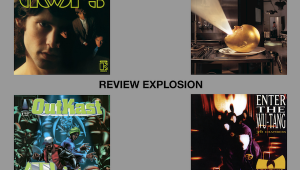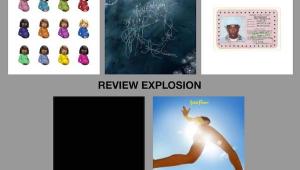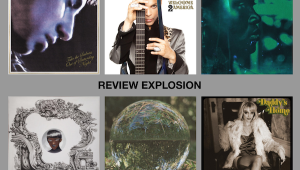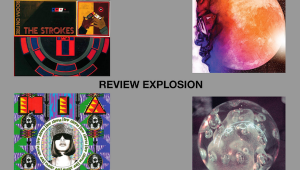Review Explosion, Short Cuts Edition, Vol.16: A Top-Notch Trio of 180g Pablo Records LP Reissues, One Each From Count Basie & His Orchestra, Count Basie Big Band, and Duke Ellington and Ray Brown, All Courtesy of Analogue Productions
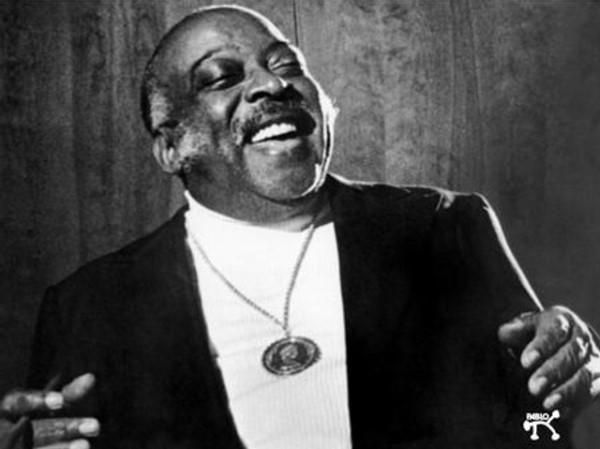
I have to admit that when I first heard there were going to be some new reissues of Pablo Records titles, my first knee-jerk thought was, “Why?” Catching myself quickly, I realized that even though many of these albums have ended up in the bargain bins for decades — some were even “cutouts,” for those of you who remember those heady, vinyl-rich days that were great for consumers but bad for the artists — these often overlooked, typically great-sounding LP gems are certainly ripe for rediscovery and re-appraisal.
Released in the 1970s and ’80s by legendary jazz producer/impresario Norman Granz, albums on the Pablo label were often lush-sounding affairs. Distributed by RCA back in the day, Pablo albums typically offered stark black-and-white, informal, working-in-the-studio photography of by-then legendary jazz artists who were still alive and well — echoing the look of Granz’s earliest releases on his pre-Verve labels, Clef and Norgran Records. That, in fact, was the point of the label in the first place, as Granz saw many of his musician friends — several of whose careers he helped establish — struggling and stalled by rapid changes in popular music, especially as rock-fusion hybrids stole much of the jazz limelight and spawned major-label disinterest. Heck, at one point in the ’70s, even an icon like Tony Bennett had to start his own label, just to get his music released.
Granz came out of retirement to save the day by starting a label named after his hero Pablo Picasso, in turn driving greats like Oscar Peterson, Joe Turner, Dizzy Gillespie, Count Basie, Ella Fitzgerald, Sarah Vaughan, and many others back into mostly great studios. Pablo releases typically sounded worlds better than many of Granz’s productions from the 1950s, capturing iconic artists in all their sophisticated maturity and in a very high-fidelity manner. He’d no doubt learned some things along the way about making good records.
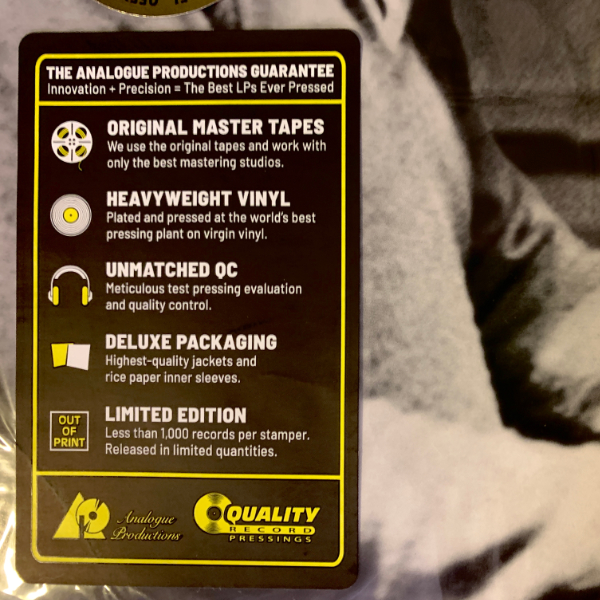
All of the new Pablo Records reissues from Analogue Productions (and Craft Recordings) bear the trademark high-quality musical DNA we have come to expect from these companies, and particularly executive producer Chad Kassem. Crafted from original analog master-tape sources, the Pablo albums are pressed on heavyweight 180g vinyl at Quality Record Pressing in a limited edition run of less than 1,000 copies per stamper. Each album recreates the original album art but is crafted in a Stoughton Printing-type construction process that is arguably better than the relatively bare-bones, near-budget-line Pablo releases of the past. Each album comes housed in an audiophile-grade plastic inner sleeve and is wrapped in a protective plastic outer baggie. The SRP for these Pablo LPs is $39.99 (and you can buy any/all of them via the Music Direct link graphics that appear throughout this review).
The following is a Short Cuts kind of taste of what to expect from these generally outstanding releases. If you want us to review more of them in more depth, just let us know, because we’re happy to do it!
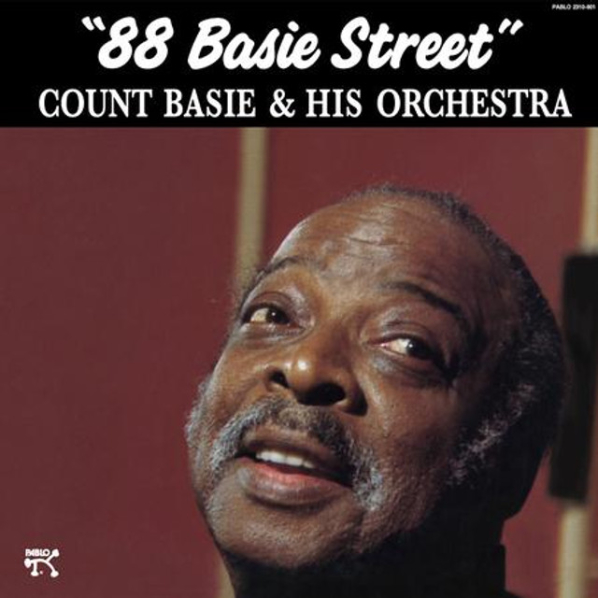
COUNT BASIE & HIS ORCHESTRA
88 BASIE STREET
180g 1LP (Analogue Productions/Pablo)
MUSIC: 10
SOUND: 10
This 1983 recording won “Best Jazz Instrumental Performance, Big Band” at the 27th Grammy Awards. Now, I don’t pretend to be a Basie expert per se, but I was kind of blown away from the opening notes of this album — recorded about a year before his passing in 1984 — as the band launches into arranger/conductor Sammy Nestico’s “Bluesville” (Side 1, Track 1). Those introductory moments feature some of the purist piano sounds I’ve heard coming off a vinyl record, with an absolutely beautiful sense of the instrument and room, off of a dead-quiet noise floor. This new edition was mastered by Kevin Gray from the original analog master tapes, and it shows.
Recorded at Oceanway Studios in Hollywood — formerly named United Western Recorders, site of Brian Wilson and company’s recording for The Beach Boys masterpieces, May 1966’s Pet Sounds and what ultimately became SMiLE, among many legendary sessions for no less than Frank Sinatra, Elvis Presley, The Mamas & The Papas, and others — the sound on 88 Basie Street is nothing short of outstanding. Demo-disc worthy? You bet!

COUNT BASIE & HIS ORCHESTRA
88 BASIE STREET
180g 1LP (Analogue Productions/Pablo)
Side 1
1. Bluesville
2. 88 Basie Street
3. Contractor’s Blues
Side 2
1. The Blues Machine
2. Katy
3. Sunday At The Savoy
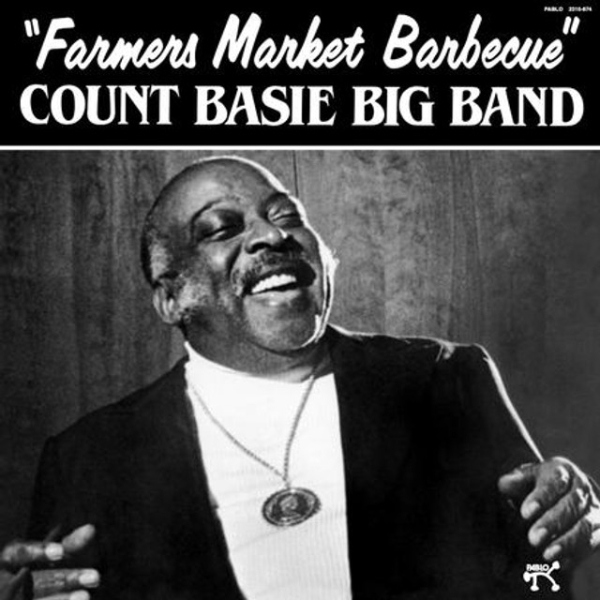
COUNT BASIE BIG BAND
FARMERS MARKET BARBECUE
180g 1LP (Pablo 2310-874)
MUSIC: 9
SOUND: 9
This 1982 recording is a bit smaller in scale than the relatively massive orchestra assembled for 88 Basie Street, but with that comes additional intimacy. I really enjoyed the drum sounds captured here on the slinky sultry version of “St. Louis Blues” (Side 1, Track 2), with much fine relaxed cymbal work by Gregg Field. Basie’s piano doesn’t have quite the presence evident on 88 Basie Street, but it’s still a lovely sounding recording, captured in 1982 at Group IV Studios in Hollywood — site of recordings by Olivia Newton-John, Ronnie Montrose, Patrice Rushen, and Gino Vanelli, among many others.
I’m not sure why, but I tended to enjoy this particular band’s slower bluesier numbers, such as guitarist Freddie Green’s “I Don’t Know Yet” (Side 2, Track 2). Farmers Market Barbecue has a slightly different sonic texture compared to the shimmering brilliance of 88 Basie Street — still full-bodied, but a wee bit boxier overall.
According to details on the aforementioned Music Direct site, Farmers was reportedly “cut from metal parts mastered by Doug Sax from the original analog master tape.” We’ll leave this to you to interpret. Either way, Farmers Market Barbecue sounds quite, quite, good, and it swings pretty hot at times too.

COUNT BASIE BIG BAND
FARMERS MARKET BARBECUE
180g 1LP (Analogue Productions/Pablo)
Side 1
1. Way Out Basie
2. St. Louis Blues
3. Beaver Junction
4. Lester Leaps In
Side 2
1. Blues For The Barbecue
2. I Don’t Know Yet
3. Ain’t That Something
4. Jumpin’ At The Woodside
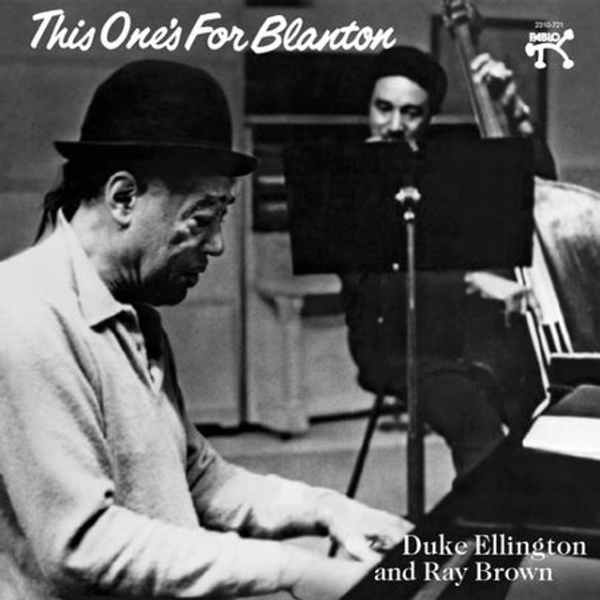
DUKE ELLINGTON AND RAY BROWN
THIS ONE’S FOR BLANTON
180 1LP (Analogue Productions/Pablo)
MUSIC: 10
SOUND: 9
Of the three Pablo reissues in this review, I am perhaps most excited about this release, which features legendary jazz piano pioneer Duke Ellington and equally iconic bassist Ray Brown. This One’s for Blanton is a Pablo Records release you don’t see around much at all these days, truth be told.
Again, we learn from Music Direct that this album was “cut from existing metal parts mastered by Doug Sax from the original analog master tape.” Super-intimate, capturing Duke playing with great verve and vigor — he passed away some 6 months after this LP was recorded in Las Vegas in December 1973 — if you have enjoyed those less frequent recordings where the maestro’s piano is the featured instrument, This One’s for Blanton is probably for you.
And for those not in the know, the “Blanton” referred to in the title is legendary bassist Jimmy Blanton, who, in a short time with Duke Ellington’s band in the 1940s, helped change public perception of the role of the bass in jazz. He revolutionized it, really. Blanton was often featured front of stage back in the day — an unusual thing at the time — and his lyrical playing elevated the nature of the instrument. According to the interwebs, in November 1940, Blanton and Ellington recorded two tracks – “Blues,” and “Plucked Again” – which are considered the first commercially recorded piano/bass duets.
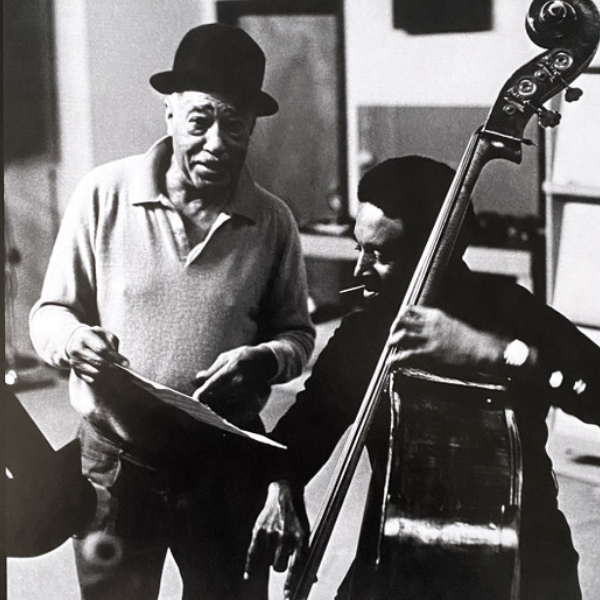
From Music Direct, we also learn, “When he died in 1942, 21-year-old Blanton had liberated the string bass from its traditional role as an accompanist. Brown, and another Blanton disciple, Oscar Pettiford, carried forward Blanton’s work of developing the bass into a solo instrument. Their contributions had a great deal to do with be-bop’s becoming a mature music. More than 30 years after Blanton’s death, Brown went into a studio with Ellington to pay homage to his idol. Their duets echo the famous ones of Ellington and Blanton and demonstrate Brown’s creativity and virtuosity on the Blanton model.”
One side of the album features five formal songs, four written or co-written by Ellington including a lovely “Sophisticated Lady” (Side 1, Track 4), which takes a moment for you to recognize the classic melody. Then, they also cover Ma Rainey’s “See See Rider” (Side 1, Track 5).
Side 2 is a four-movement work titled “Fragmented Suite for Piano and Bass” that is a wonder. I’ll put it this way — I can easily imagine Jerry Garcia (yes, late of the Grateful Dead) sitting in with these two as the piece starts out as a kind of repetitive vamp, a la the Dead’s “Dark Star.” Seriously! And, while I’m dreaming “madly” (to borrow a phrase Duke used frequently), I can also hear angular players like Fred Frith or Henry Kaiser joining in the quirky fun of “Fourth Movement” (Side 2, Track 4). Not only that, but This One’s for Blanton is such a hushed, intimate recording that you can hear the musicians moving and breathing in the studio at points.
And, I must admit, I am wondering how I seemingly missed finding this album along the way, until now. (Clearly, I am still an aspiring Ellington completist, even after 20 years of deep dive immersion into collecting his vast catalog of music!) Perhaps there wasn’t much demand for this sort of recording at the time from Duke, this late in his career? Given it was issued in 1975, a year after he passed in May 1974, it is possible the album may have fallen through the cracks in the wake of inevitable compilations of his biggest hits. At the time of this posting, there is exactly one original Canadian copy of it on Discogs (selling for about $30), as well as several Japanese pressings. There are some older copies on eBay as well, so it is around, but not super-abundantly.
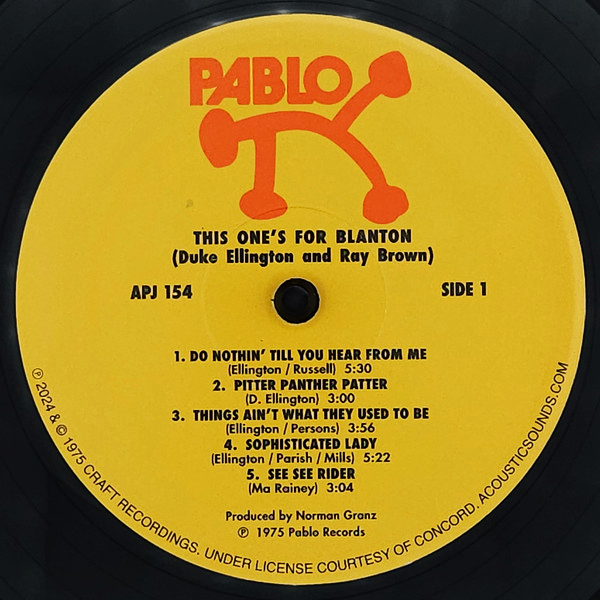
I suspect this new Analogue Productions reissue is the one audiophiles will want anyway, especially for its impeccably quiet noise floor. As an audiophile release, well, just listen for the decay of Duke’s piano at the end of “Second Movement” (Side 2, Track 2), and you’ll know original mastering engineer Doug Sax captured some special lightning in this bottle! As an Ellington fan, I find This One’s for Blanton to be an essential listen — and you should too.

DUKE ELLINGTON AND RAY BROWN
THIS ONE’S FOR BLANTON
180 1LP (Analogue Productions/Pablo)
Side 1
1. Do Nothin’ Till You Hear From Me
2. Pitter Panther Patter
3. Things Ain’t What They Used To Be
4. Sophisticated Lady
5. See See Rider
Side 1
1. First Movement
2. Second Movement
3. Third Movement
4. Fourth Movement
Mark Smotroff is an avid vinyl collector who has also worked in marketing communications for decades. He has reviewed music for AudiophileReview.com, among others, and you can see more of his impressive C.V. at LinkedIn.
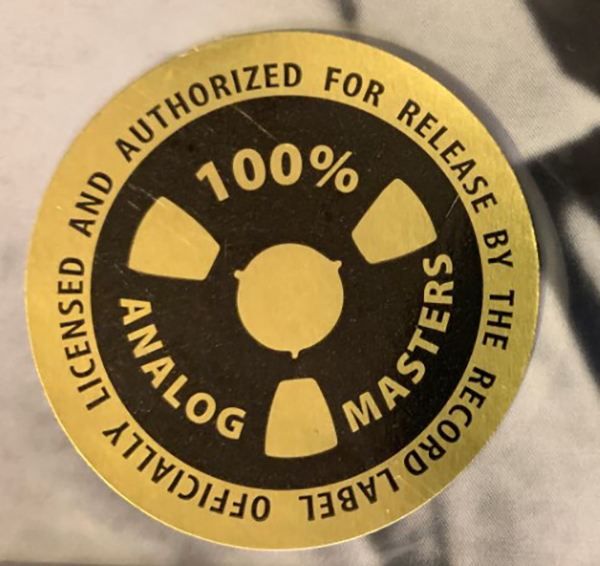
- Log in or register to post comments





